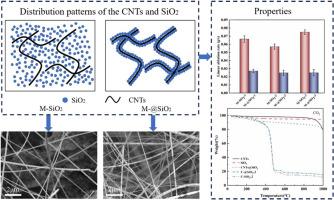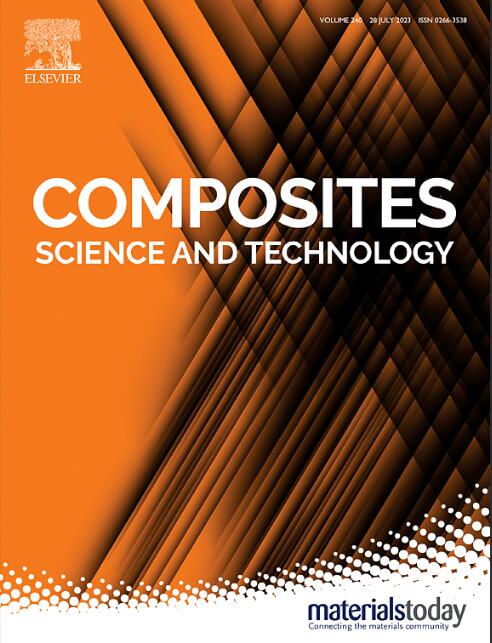Effects of SiO2-coated CNTs on the directional formation of SiC whiskers and improvement in the ablative resistance of polymer-matrix composites
IF 8.3
1区 材料科学
Q1 MATERIALS SCIENCE, COMPOSITES
引用次数: 0
Abstract
As the development of hypersonic aerospace technology progresses, greater challenges are presented for solid rocket motors (SRMs) thermal protection, and the ablation performance of insulation materials needs to be further improved. Carbon nanotubes (CNTs) as a new type of reinforcing nano-filler, readily react with the oxidative components in the working gas during SRMs operation, limiting their excellent performance. In this study, we propose to coat the commonly used reinforcing filler, SiO2, on the surface of CNTs to suppress their susceptibility to oxidation and investigate the effects of adding CNTs, SiO2, and CNTs@SiO2 to the matrix on material properties. The results show that the addition of CNTs@SiO2 significantly improves the ablation resistance of the insulation material, with the linear ablation rate of M-@SiO2-2 being 56 % lower than that of M-SiO2-2. Based on the analysis of the material's antioxidation performance and the strength of the resulting char layer after ablation, the reasons for the improvement of ablation performance are discussed. By conducting high-temperature tube furnace tests, the composition and structure of the char layer at different temperatures are studied, and it is found that CNTs in the CNTs@SiO2 formulation can directly provide the carbon source required for the carbon thermal reduction reaction, promoting the directional growth of SiC whiskers. Based on these findings, an ablation mechanism is proposed.

涂覆 SiO2 的 CNT 对定向形成 SiC 晶须和提高聚合物基复合材料抗烧蚀性的影响
随着高超音速航空航天技术的发展,固体火箭发动机(SRM)的热防护面临着更大的挑战,绝热材料的烧蚀性能需要进一步提高。碳纳米管(CNTs)作为一种新型的增强纳米填料,在 SRM 运行过程中容易与工作气体中的氧化成分发生反应,限制了其优异性能的发挥。在本研究中,我们提出在 CNT 表面包覆常用的增强填料 SiO2,以抑制其易氧化性,并研究了在基体中添加 CNT、SiO2 和 CNTs@SiO2 对材料性能的影响。结果表明,添加 CNTs@SiO2 能显著提高绝缘材料的抗烧蚀性,M-@SiO2-2 的线性烧蚀率比 M-SiO2-2 低 56%。根据对材料抗氧化性能和烧蚀后产生的炭层强度的分析,讨论了烧蚀性能改善的原因。通过进行高温管式炉试验,研究了不同温度下炭层的组成和结构,发现 CNTs@SiO2 配方中的 CNTs 可直接提供碳热还原反应所需的碳源,促进 SiC 晶须的定向生长。基于这些发现,提出了一种烧蚀机制。
本文章由计算机程序翻译,如有差异,请以英文原文为准。
求助全文
约1分钟内获得全文
求助全文
来源期刊

Composites Science and Technology
工程技术-材料科学:复合
CiteScore
16.20
自引率
9.90%
发文量
611
审稿时长
33 days
期刊介绍:
Composites Science and Technology publishes refereed original articles on the fundamental and applied science of engineering composites. The focus of this journal is on polymeric matrix composites with reinforcements/fillers ranging from nano- to macro-scale. CSTE encourages manuscripts reporting unique, innovative contributions to the physics, chemistry, materials science and applied mechanics aspects of advanced composites.
Besides traditional fiber reinforced composites, novel composites with significant potential for engineering applications are encouraged.
 求助内容:
求助内容: 应助结果提醒方式:
应助结果提醒方式:


